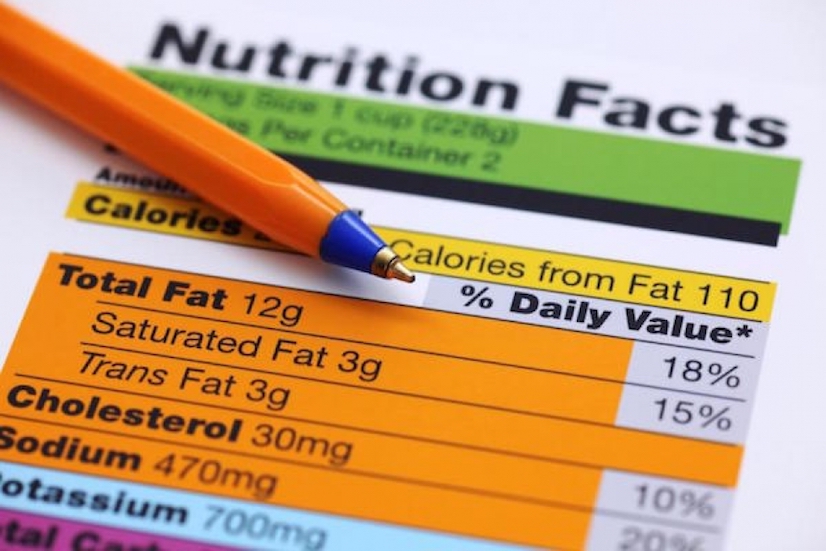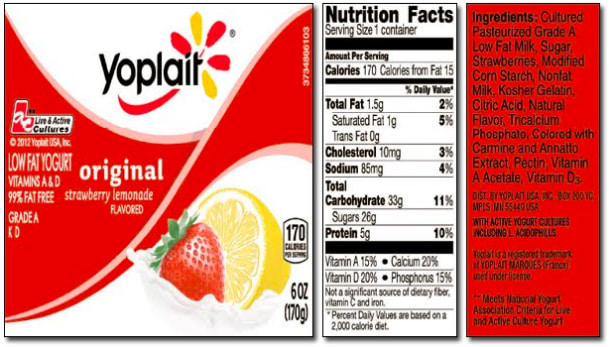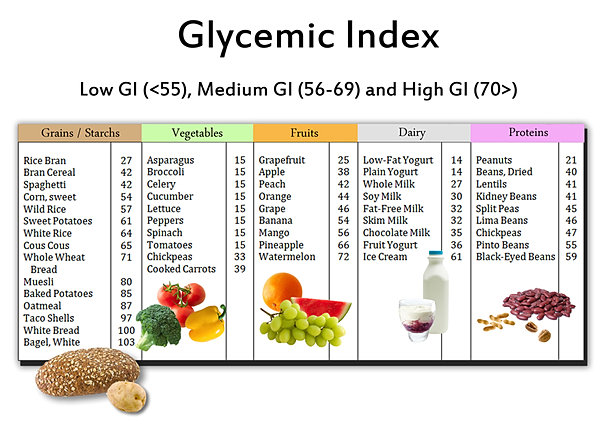45 food labels low fat
Low-Fat Foods - American Cancer Society Low-fat foods to choose from Dairy and dairy-like products Low-fat (1%) or fat-free (skim) yogurt, cottage cheese, or milk Neufchatel or "light" cream cheese or fat-free cream cheese Fat-free American cheese or other types of fat-free cheeses Fish, meat, poultry, and other protein Egg whites or egg substitutes Never Eat Anything With These Food Labels — Eat This Not That For example, one of the most common "health" food package labels you'll see is "low-fat" or "fat-free." While this may be true, it's important to keep in mind that the absence or reduction of fat usually means the presence of way too much added sugar.Manufacturers know they must make low-fat foods palatable in some way, so they add tons of unhealthy sugar to make you enjoy the product (and ...
Nutrient Claims on Food Labels - Clemson University At least 25% less sugar*. Fiber Claims. (If food is not low in total fat, the label must state total fat in conjunction with the fiber claims.) High fiber. 5 grams or more. Good source of fiber. 2.5 grams to 4.9 grams. More or added fiber. At least 2.5 grams more*.

Food labels low fat
Food Packaging Claims | American Heart Association "Very Low" and "Low" means the food has a little more than foods labeled "Free." "Reduced" or "Less" mean the food has 25% less of a specific nutrient than the regular product. "More," "Fortified," "Enriched," "Added," "Extra," or "Plus" means the food has 10% or more of the Daily Value (DV) than the regular product. Fats | Nutrition.gov Read about saturated fat - what it is, where it is found, and how you can use the Nutrition Facts Label for reducing saturated fat in your diet. The Skinny on Fat HHS, National Institutes of Health Fat is an essential nutrient for our bodies. It provides energy. It helps our guts absorb certain vitamins from foods. How to Read Food Labels Without Being Tricked - Healthline Yet, one brand's low-calorie version may have similar calories as another brand's original. Low-fat. This label usually means that the fat has been reduced at the cost of adding more sugar. Be very...
Food labels low fat. Understanding Food Terms - American Cancer Society Low. How you might see it on a label: low-fat, low-sodium, low-cholesterol, low-calorie What it means: This term can be used on foods that can be eaten often and you still won't get more than the recommended amount of that nutrient. The nutrients that can be described with this label are: Fat; Saturated fat; Cholesterol; Sodium (salt) Food Labeling & Nutrition | FDA Food labeling is required for most prepared foods, such as breads, cereals, canned and frozen foods, snacks, desserts, drinks, etc. Nutrition labeling for raw produce (fruits and vegetables) and ... Food Labels: How to Decode the 11 Trickiest Terms - Reader's Digest Foods bearing this label meet the low standard for fat and saturated fat, have 480 mg or less of sodium, and are low in cholesterol. They should also have at least 10 percent of the RDV for such... How food labels can mislead shoppers about fat content But labels that promote a host of foods as 'light' or lower fat are making empty claims, a consumer watchdog has found. Everyday products from fruit loaf to crisps, butter alternatives to cheese ...
How To Read Food and Beverage Labels - National Institute on Aging If a food has 5% DV or less of a nutrient per serving, it is considered low in that nutrient. If it has 20% DV or more of a nutrient per serving, it is considered high in that nutrient. Low or high can be either good or bad — it depends on whether you need more of a nutrient (like dietary fiber) or less (like saturated fat). PDF Food Label Tip: How to Choose Foods Low In Saturated Fat, Trans Fat ... Fat-free milk is a better choice. Potato Chips Microwave Popcorn These food labels are for one serving of potato chips (about 12 chips) and one serving of microwave popcorn (1 cup). Microwave popcorn has the lowest % of saturated fat and the lowest amount of trans fat. It has 5% saturated fat and 0 grams of trans fat. What the Labels Mean - Calorie Control Council LOW-FAT 3 grams or less of total fat for a given reference amount LOW-CALORIE no more than 40 calories for a given reference amount (except sugar substitutes) LOW-CHOLESTEROL 20 milligrams or less cholesterol and 2 grams or less of saturated fat for a given reference amount Don't Be Fooled By These Food Labels - Health Two percent milk sounds great—it's such a low number! What most people don't realize is that whole milk contains only 3.25% fat. So 2% milk contain less fat than regular milk, but not that much. It...
Reading Food Labels | ADA - American Diabetes Association Put food labels to work. The Nutrition Facts labels on foods are really the key to making the best choices. We'll cover the basics so that these labels make shopping easier for you. You've heard it all. From carb-free to low-carb, to whole and empty carbs, it's hard to know what it all means. Blood sugar highs and lows aren't always ... Food Labels: What does the 'low fat' label actually mean? - bodyandsoulau To get you up to speed, a product can only use the low-fat claim if it has less than 3g fat per 100g (and if it's a liquid, it has to have less than 1.5g fat per 100g). In essence, that means that just because something is labelled as low fat, it doesn't automatically make it healthy - it could be bursting with sugar or salt instead. 'Low fat' or 'Low sugar' label fools people into buying unhealthy foods ... To think that the low-fat label makes it a healthy choice is not necessarily true. ... This led to the low fat craze which added sugar and salt to make the low fat food taste better. The average paerson takes in about 400 calories/day more than in 1985 and weighs a lot more too. Dump the grains and sugar. Insulin Low Fat Nutrient Content Claim - LabelCalc In fact, a recent global study of healthy eating habits reported that 25% of North Americans felt that a "low-fat" label was very important to them when deciding whether to purchase a food product. Furthermore, 59% of North Americans reported that reducing their fat intake was a strategy they used to lose weight.
Food labels - NHS Some front-of-pack nutrition labels use red, amber and green colour coding. Colour-coded nutritional information tells you at a glance if the food has high, medium or low amounts of fat, saturated fat, sugars and salt: red means high amber means medium green means low In short, the more green on the label, the healthier the choice.
What does low fat, light mean on a food label?
Don't Be Fooled By Low-Fat Food Labels - SuperFoodsRx The "reduced-fat" label means just that - reduced fat. Not low-fat. For a product to be labeled "reduced-fat" it must be 25% less fat than the regular version. There are some reduced-fat products that have 35% or even 60% less fat than the original, but the food companies proudly list this on the front of their packages as though this ...
How to Read Food Labels for a Heart-Healthy Diet The lower the net carbs, the better." Berries: "I usually choose blueberries, which are anti-inflammatory and not as high in sugar as bananas.". Yogurt: "I choose a low-fat brand that's marketed as 'diabetes friendly' on the label, which means it's low in carbohydrates. You get all the benefit of yogurt with far fewer carbs.
13 Low-Fat Foods That Are Good For Your Health Summary Fruits are sweet, low-fat foods loaded with antioxidants, which protect your cells against free radical damage. 3. Beans and Legumes. Legumes — also known as pulses — are a class of ...
Reading Food Labels (for Parents) - Nemours KidsHealth Trans fat should be as low as possible (less than 1% of total calories). Unsaturated Fat Unsaturated fats may also be listed under total fat. Unsaturated fats are often called "good fats" because they don't raise cholesterol levels as saturated fats do. Most fats should come from sources of unsaturated fats. Cholesterol
Food Labels: Fat & Cholesterol | Home & Garden Information Center Be aware that the word "low-fat" on the label doesn't automatically mean that a food is "low-calorie." "Low-fat" and "fat-free" foods, such as muffins and desserts, often contain more sugars and as many calories as the regular versions. You don't have to eat all low-calorie and low-fat foods.
Food Labels Explained - Farm Aid There are many different food labels that contain information about how food was grown or processed. However, some labels can be misleading. Below are examples of labels to look for and ask questions about at the store or market where you see them. Certified Labels Organic USDA's National Organic Program regulates labeling requirements for organic agricultural products. Organic labels can be ...
Fat Burning Diet Weightlose Svg Png Icon Free Download - Fat Burner Icon Png , Free Transparent ...
How to Understand and Use the Nutrition Facts Label | FDA - U.S. Food ... Nutrients to get less of: Saturated Fat, Sodium, and Added Sugars. Saturated fat, sodium, and added sugars are nutrients listed on the label that may be associated with adverse health effects - and...
Food Labels | CDC - Centers for Disease Control and Prevention If you eat the whole thing, you are eating 8 times the amount of calories, carbs, fat, etc., shown on the label. Total Carbohydrate shows you types of carbs in the food, including sugar and fiber. Choose foods with more fiber, vitamins, and minerals. Choose foods with lower calories, saturated fat, sodium, and added sugars. Avoid trans fat.
How to Read Food Labels Without Being Tricked - Healthline Yet, one brand's low-calorie version may have similar calories as another brand's original. Low-fat. This label usually means that the fat has been reduced at the cost of adding more sugar. Be very...
Fats | Nutrition.gov Read about saturated fat - what it is, where it is found, and how you can use the Nutrition Facts Label for reducing saturated fat in your diet. The Skinny on Fat HHS, National Institutes of Health Fat is an essential nutrient for our bodies. It provides energy. It helps our guts absorb certain vitamins from foods.
Food Packaging Claims | American Heart Association "Very Low" and "Low" means the food has a little more than foods labeled "Free." "Reduced" or "Less" mean the food has 25% less of a specific nutrient than the regular product. "More," "Fortified," "Enriched," "Added," "Extra," or "Plus" means the food has 10% or more of the Daily Value (DV) than the regular product.













Post a Comment for "45 food labels low fat"